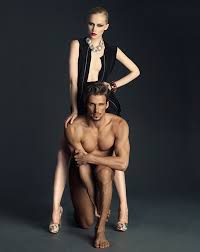Source(google.com.pk)
Fashion Model Websites Biography
Fashion Futures is a call for a sustainable fashion industry. It’s designed to help organisations in all sectors take action which will safeguard their future, protect our environment and improve the lives of their customers, workers and suppliers around the world.
Four vivid scenarios explore how climate change, resource shortages, population growth and other factors will shape the world of 2025 and the future of the fashion industry within it. They are designed as a tool to challenge companies’ strategies, inspire them with new opportunities and help them plan for the future. We’ve brought them to life in four animations.
The global fashion industry generates over a trillion dollars a year. So what we wear - and how it's made and sold - can have a huge positive impact on our society and environment. The report, produced by Forum for the Future and Levi Strauss & Co., describes how fashion companies can be successful by becoming sustainable.
“For the fashion industry to be sustainable economically, it must be sustainable socially and environmentally too. These provocative scenarios challenge all of us to look beyond the short term and use our collective power to work to create the kind of positive world we’d like to see in 2025.”
John Anderson, president and chief executive officer of Levi Strauss & Co.
The report draws on Forum for the Future’s expertise in futures thinking and a series of in-depth interviews and peer reviews with fashion experts from around the world – in academia, trade unions, NGOs, manufacturing, design and retail. The scenarios explore every aspect of the industry, from production of raw materials, through manufacturing and sale, to use and end of life. They cover a wide range of issues and pose some searching questions:
How will the industry react to climate change impacts, shortages of cotton and other raw materials?
How could the fashion workforce be affected by shifting supply chains and technological development?
How might technology influence fashion and change the way it is produced and sold?
How will people care for their clothes in a future of water shortages and high energy prices?
How could reuse and remanufacturing of clothing develop as a response to higher demand and prices?
The report outlines five lessons for the fashion industry and also includes practical ways that companies from all parts of the industry, as well as universities and colleges, can use the scenarios. The scenarios are designed as a tool to challenge companies’ strategies, inspire them with new opportunities and help them plan for the future. View full report.
We’ve created resources to allow these organisations to make use of in workshops and course work. Download them here.
The scenarios can also be used to help students understand the challenges of the future and come up with ideas for sustainable products and services. In 2009, we piloted a Fashion Futures module with students from the London College of Fashion’s MA Fashion and the Environment. Find out more.
The scenarios are full of vivid details: clothes grown in vats, 3-D body scanners and waterless washing machines. Much of this has a basis in fact. You can find out more here.
"Companies need to be seeding innovation and new ideas now in order to thrive in a resource constrained world. We need thought-provoking research like Fashion Futures to help us collaborate and advocate for the right future solutions around the most important issues on sustainability"
Hannah Jones, Vice President, Sustainable Business and Innovation, Nike Inc.
Get in touch
Contact us if you would like us to help you run a workshop session at your company or college, or if you would like us to speak at an event you are holding. Or just to have a chat about the project and how it applies to your business.










Fashion Model Websites Biography
Fashion Futures is a call for a sustainable fashion industry. It’s designed to help organisations in all sectors take action which will safeguard their future, protect our environment and improve the lives of their customers, workers and suppliers around the world.
Four vivid scenarios explore how climate change, resource shortages, population growth and other factors will shape the world of 2025 and the future of the fashion industry within it. They are designed as a tool to challenge companies’ strategies, inspire them with new opportunities and help them plan for the future. We’ve brought them to life in four animations.
The global fashion industry generates over a trillion dollars a year. So what we wear - and how it's made and sold - can have a huge positive impact on our society and environment. The report, produced by Forum for the Future and Levi Strauss & Co., describes how fashion companies can be successful by becoming sustainable.
“For the fashion industry to be sustainable economically, it must be sustainable socially and environmentally too. These provocative scenarios challenge all of us to look beyond the short term and use our collective power to work to create the kind of positive world we’d like to see in 2025.”
John Anderson, president and chief executive officer of Levi Strauss & Co.
The report draws on Forum for the Future’s expertise in futures thinking and a series of in-depth interviews and peer reviews with fashion experts from around the world – in academia, trade unions, NGOs, manufacturing, design and retail. The scenarios explore every aspect of the industry, from production of raw materials, through manufacturing and sale, to use and end of life. They cover a wide range of issues and pose some searching questions:
How will the industry react to climate change impacts, shortages of cotton and other raw materials?
How could the fashion workforce be affected by shifting supply chains and technological development?
How might technology influence fashion and change the way it is produced and sold?
How will people care for their clothes in a future of water shortages and high energy prices?
How could reuse and remanufacturing of clothing develop as a response to higher demand and prices?
The report outlines five lessons for the fashion industry and also includes practical ways that companies from all parts of the industry, as well as universities and colleges, can use the scenarios. The scenarios are designed as a tool to challenge companies’ strategies, inspire them with new opportunities and help them plan for the future. View full report.
We’ve created resources to allow these organisations to make use of in workshops and course work. Download them here.
The scenarios can also be used to help students understand the challenges of the future and come up with ideas for sustainable products and services. In 2009, we piloted a Fashion Futures module with students from the London College of Fashion’s MA Fashion and the Environment. Find out more.
The scenarios are full of vivid details: clothes grown in vats, 3-D body scanners and waterless washing machines. Much of this has a basis in fact. You can find out more here.
"Companies need to be seeding innovation and new ideas now in order to thrive in a resource constrained world. We need thought-provoking research like Fashion Futures to help us collaborate and advocate for the right future solutions around the most important issues on sustainability"
Hannah Jones, Vice President, Sustainable Business and Innovation, Nike Inc.
Get in touch
Contact us if you would like us to help you run a workshop session at your company or college, or if you would like us to speak at an event you are holding. Or just to have a chat about the project and how it applies to your business.
Fashion Model Websites
Fashion Model Websites
Fashion Model Websites
Fashion Model Websites
Fashion Model Websites
Fashion Model Websites
Fashion Model Websites
Fashion Model Websites
Fashion Model Websites
Fashion Model Websites
Fashion Model Websites
No comments:
Post a Comment